Tempering chocolate with cocoa butter “silk”
Tempering is a critical part of the chocolate making process. Get it right, and your chocolate will have a good shine, snap, and creamy texture. Get it wrong, and you’ll have a matte bar that breaks apart like shale and tastes grainy in your mouth.
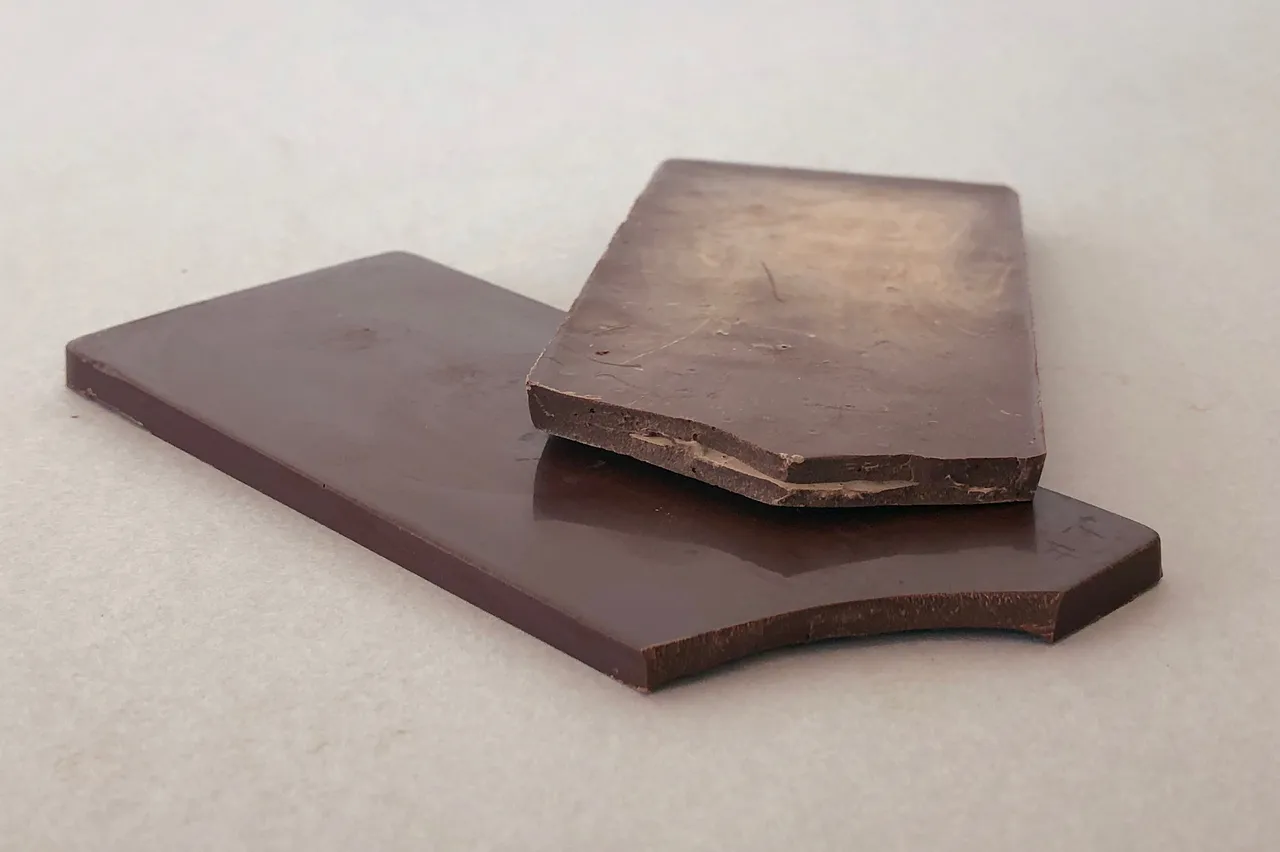
Well tempered and poorly tempered chocolate
What is tempering?
Tempering is the process of creating Form V crystals in chocolate. These crystals give your chocolate the characteristics you want: shine, snap, and smoothness.
So how do you ensure these special crystals form in your chocolate? We know of two ways: (1) take your molten chocolate through a very particular temperature journey or (2) “seed” your chocolate with Form V crystals to create more Form V crystals.
The temperature struggle
When you heat chocolate to above 110F, you destroy all crystals in the chocolate. Cooling to 80F creates Form IV and Form V crystals along the way. Re-heating to ~88F breaks apart the Form IV crystals, leaving you with just Form V.
One way to make this happen is to heat the chocolate, spread most of it on a cool marble slab to reduce the temperature, then add some of the remaining hotter chocolate to bring it back to 88F. But tempering this way at home was a real challenge for us: it’s messy, error-prone, and ill-suited for larger batches. For every time we got it right, we got it wrong twice.
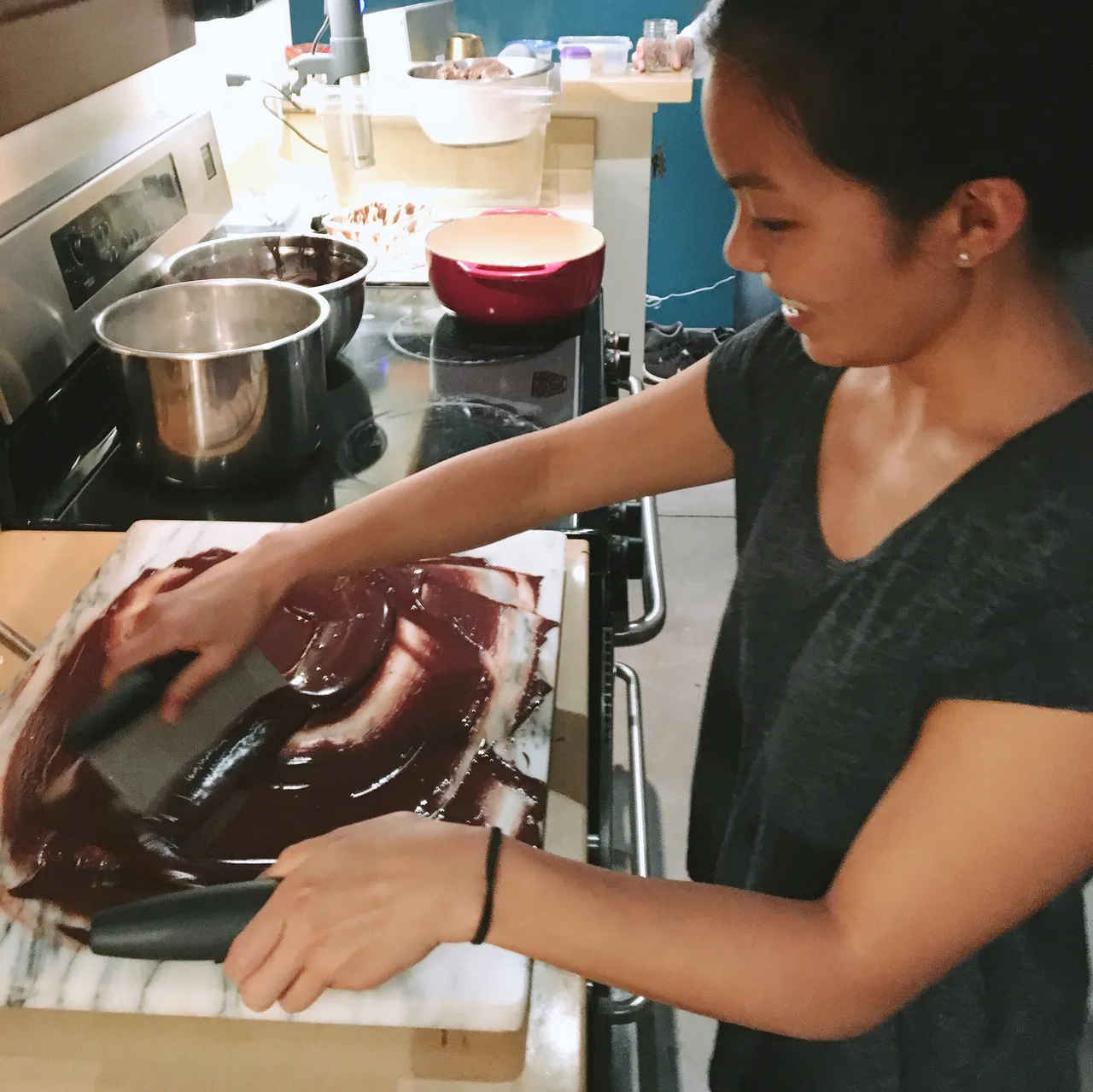
Tempering with a marble slab: what a mess!
A better way: silk
Looking for help, we were intrigued by a Chocolate Alchemy post that mentioned “Silk.”
“Silk is great and amazing and what you should be tempering your chocolate with”. — The Alchemist
Cocoa butter is the fat extract from chocolate: put cocoa nibs in an oil press and you get cocoa butter and a rough cocoa powder. White chocolate is just cocoa butter, milk powder, and sugar.
Science says that incubating cocoa butter at 92.4F causes Form V crystals to form in the cocoa butter. This “tempered” cocoa butter can then be used to temper chocolate. This is silk.
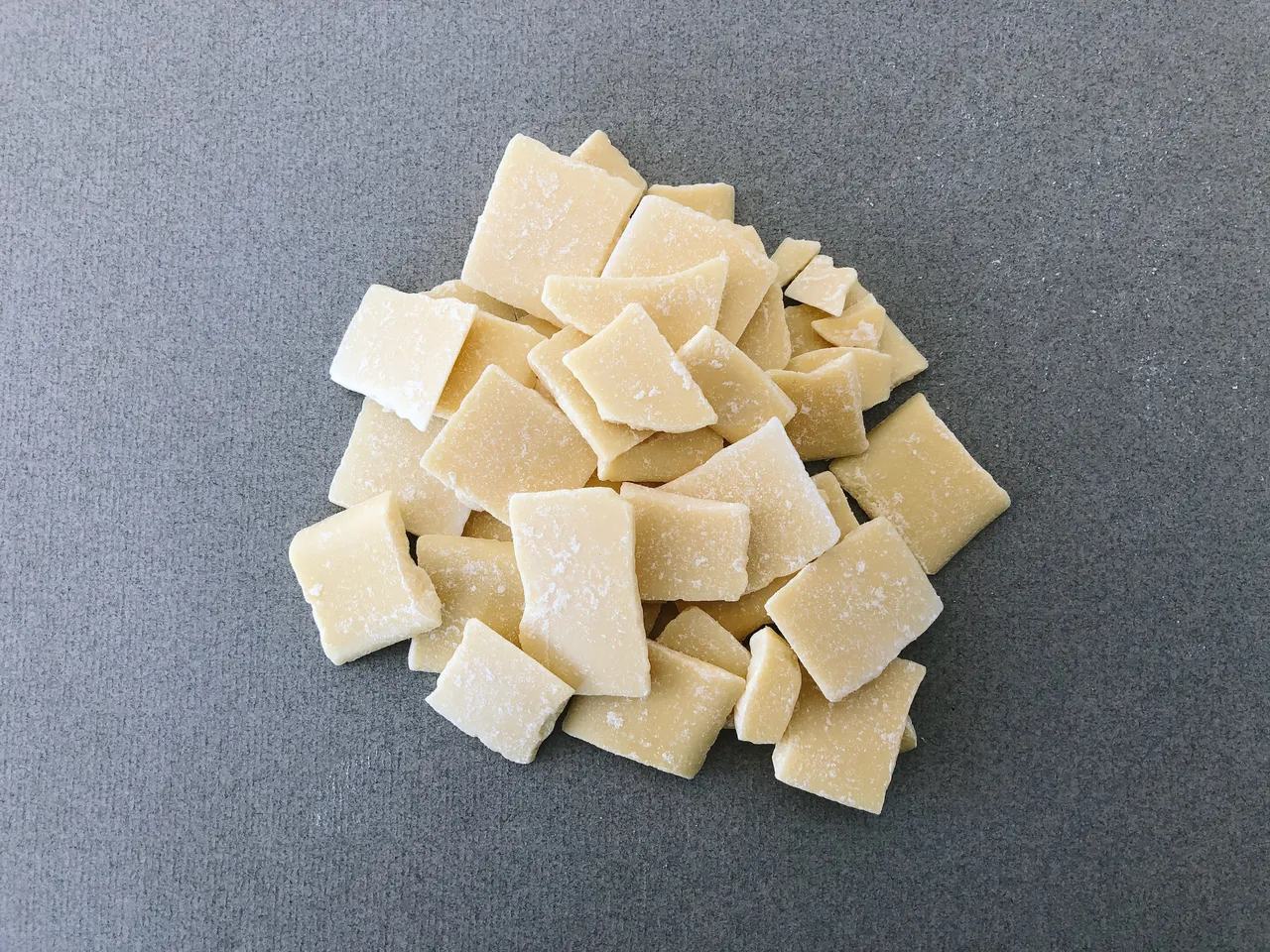
Untempered cocoa butter
Making Silk
You may be able to buy cocoa butter at your local grocer, otherwise you can get it online. You’ll need to incubate the cocoa butter at 92.4F for 24 hours, which is most easily achieved using a sous-vide setup (a water batch with a temperature controller): just put your cocoa butter into a mason jar and weigh it down to keep it submerged. Our sous vide setup isn’t precise enough to keep steady at 92.4F, but we’ve found that incubating for 12 hours at 92.5F and then another 12 at 92F does the trick.
You’ll know you’ve gotten it right if the consistency of the cocoa butter is one of mayonnaise. Scoop out the butter and cool in a Tupperware; you’ll want to create a block that’s easily grated, like Parmesan.
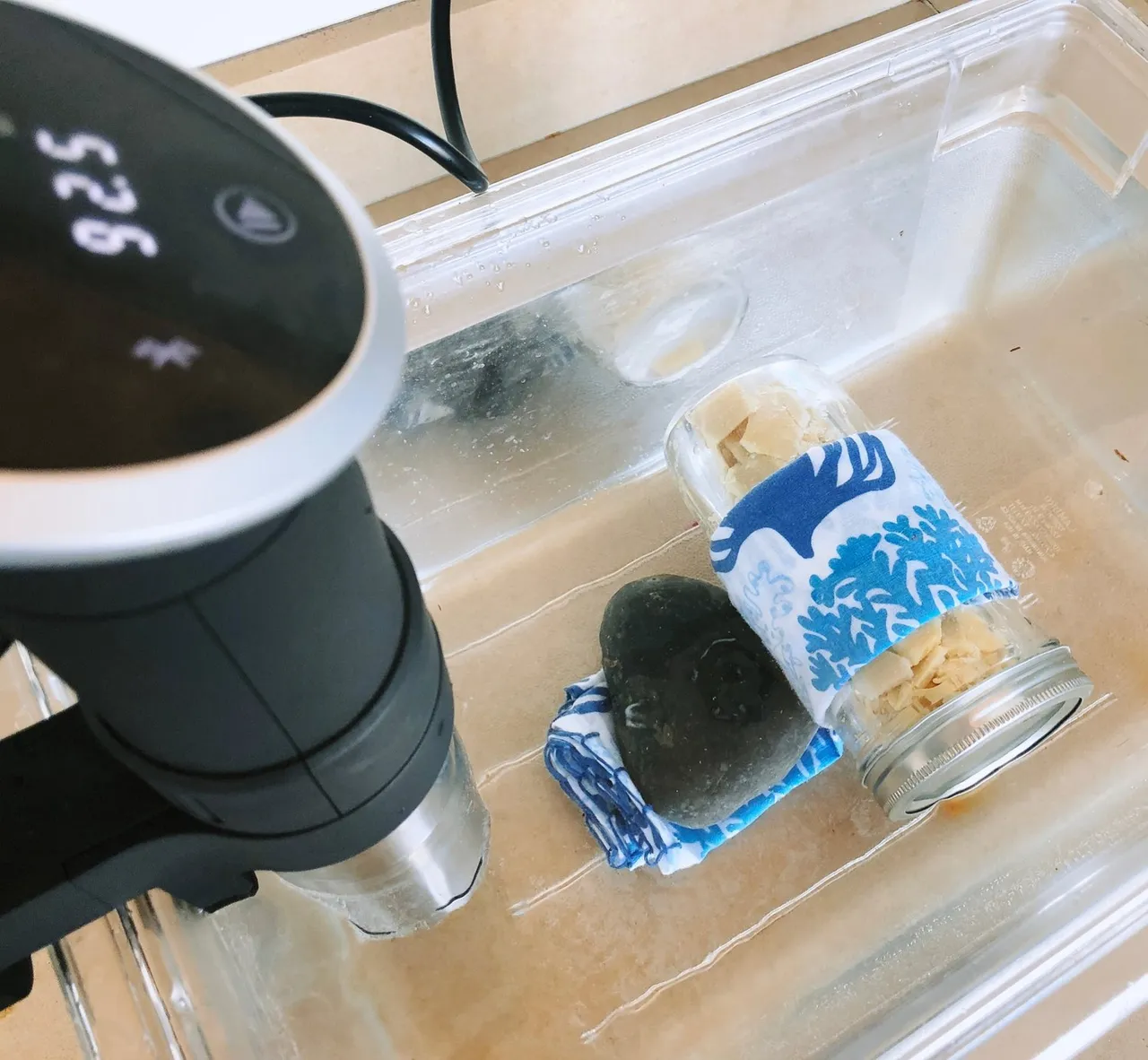
The mason jar floats in the sous vide bath, so we hold it down with a towel and a rock.
Tempering with Silk
As your chocolate cools, add the silk at ~95F. Hotter and your silk may be brought out of temper, cooler and your chocolate will thicken and get harder to mold. You’ll want to add at least 1% of cocoa butter silk to your chocolate by weight. We’ve been using 2% to play it safe and get a great temper each time.
Grate with a micro plane. Weigh on a scale. Add and stir vigorously, then pour the tempered chocolate into molds. As you work through larger batches, the chocolate may cool and become difficult to work with. Simply use a hair dryer to bring the temperature back up to ~92F.
Once the edges of the chocolate begin to harden in the molds, place in the fridge for 20-30 minutes. As a liquid turns solid, it’ll actually heat up through the phase transformation; placing the molds in the fridge prevents this from bringing your chocolate out of temper.
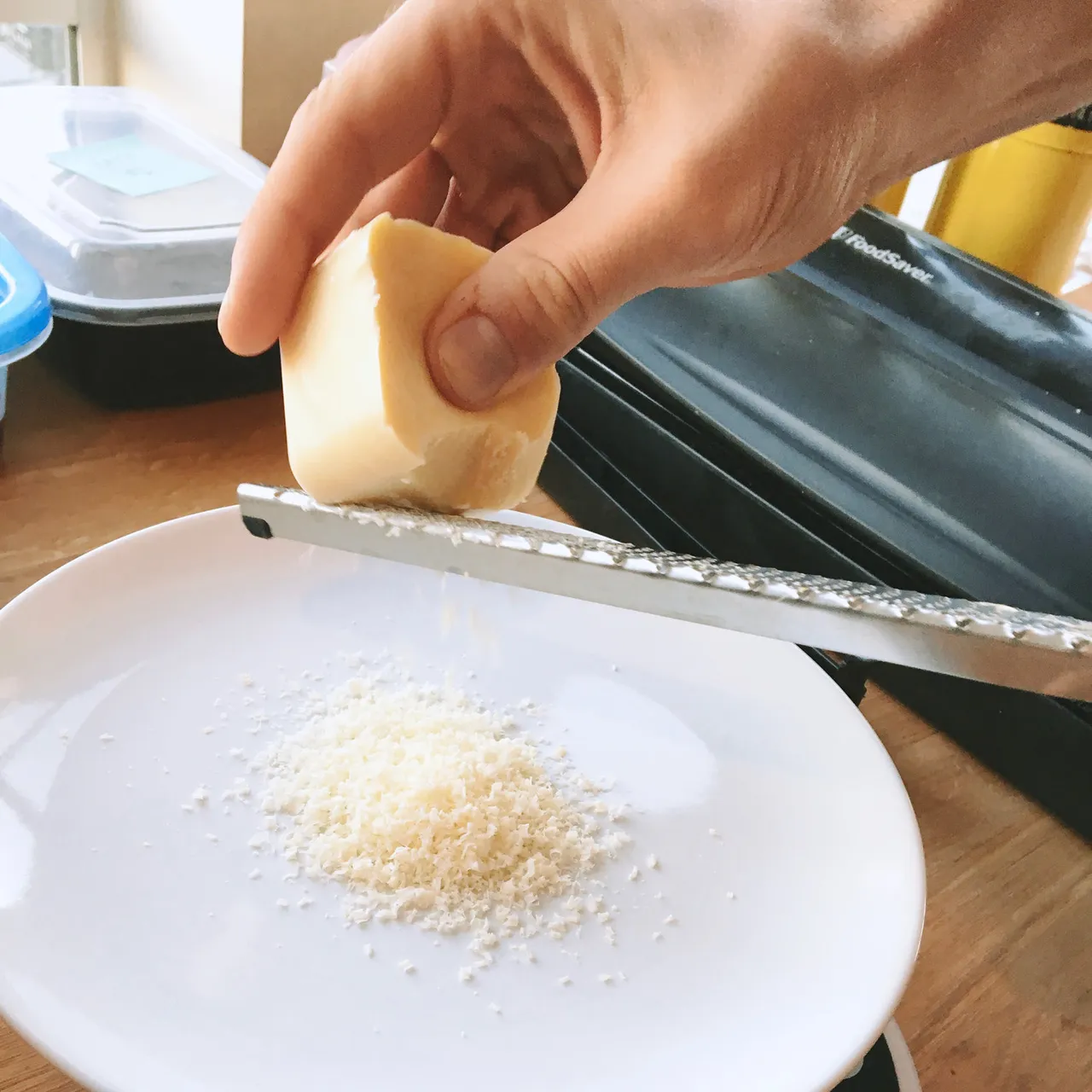
Shave a block of silk with a microplane
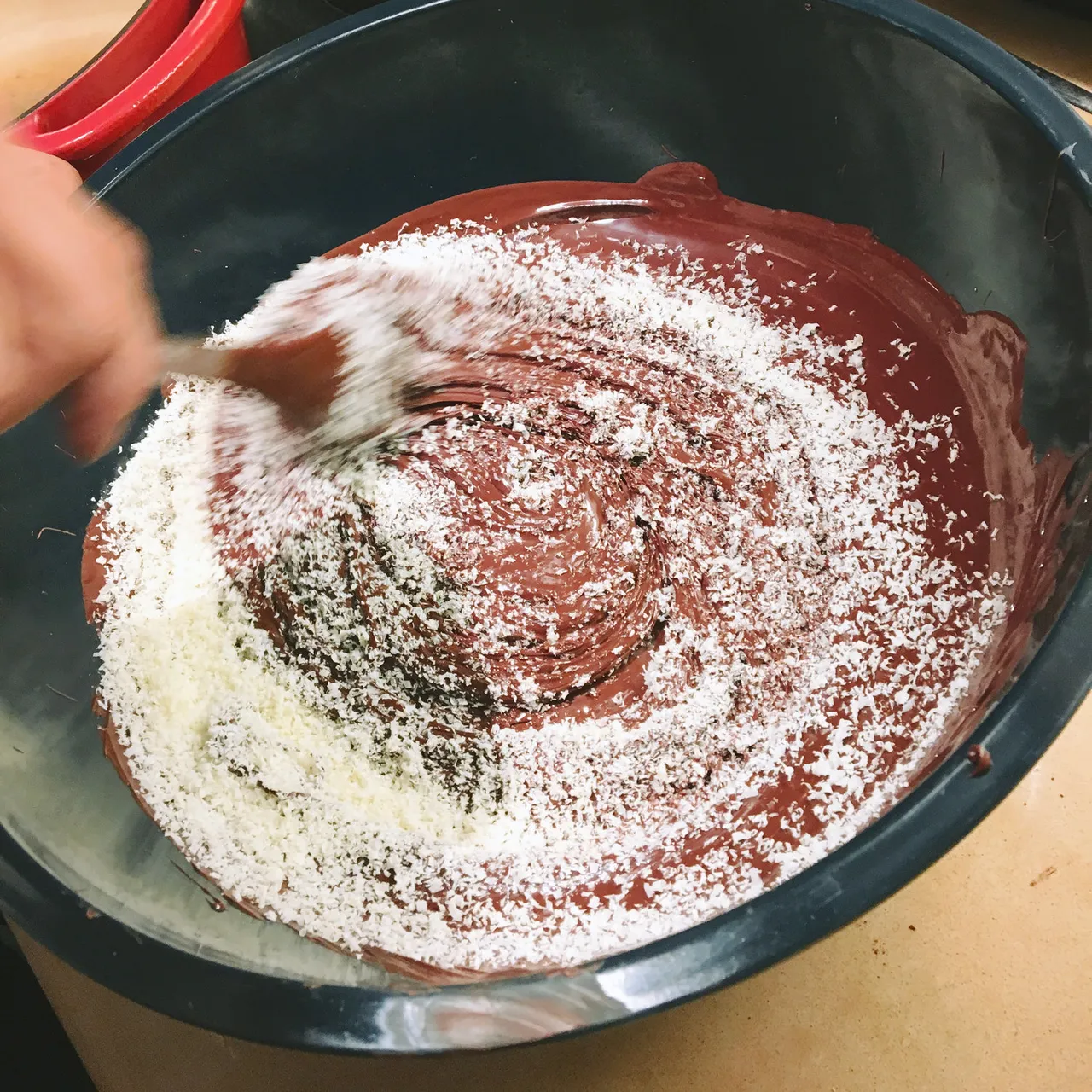
Stir vigorously at about 95F
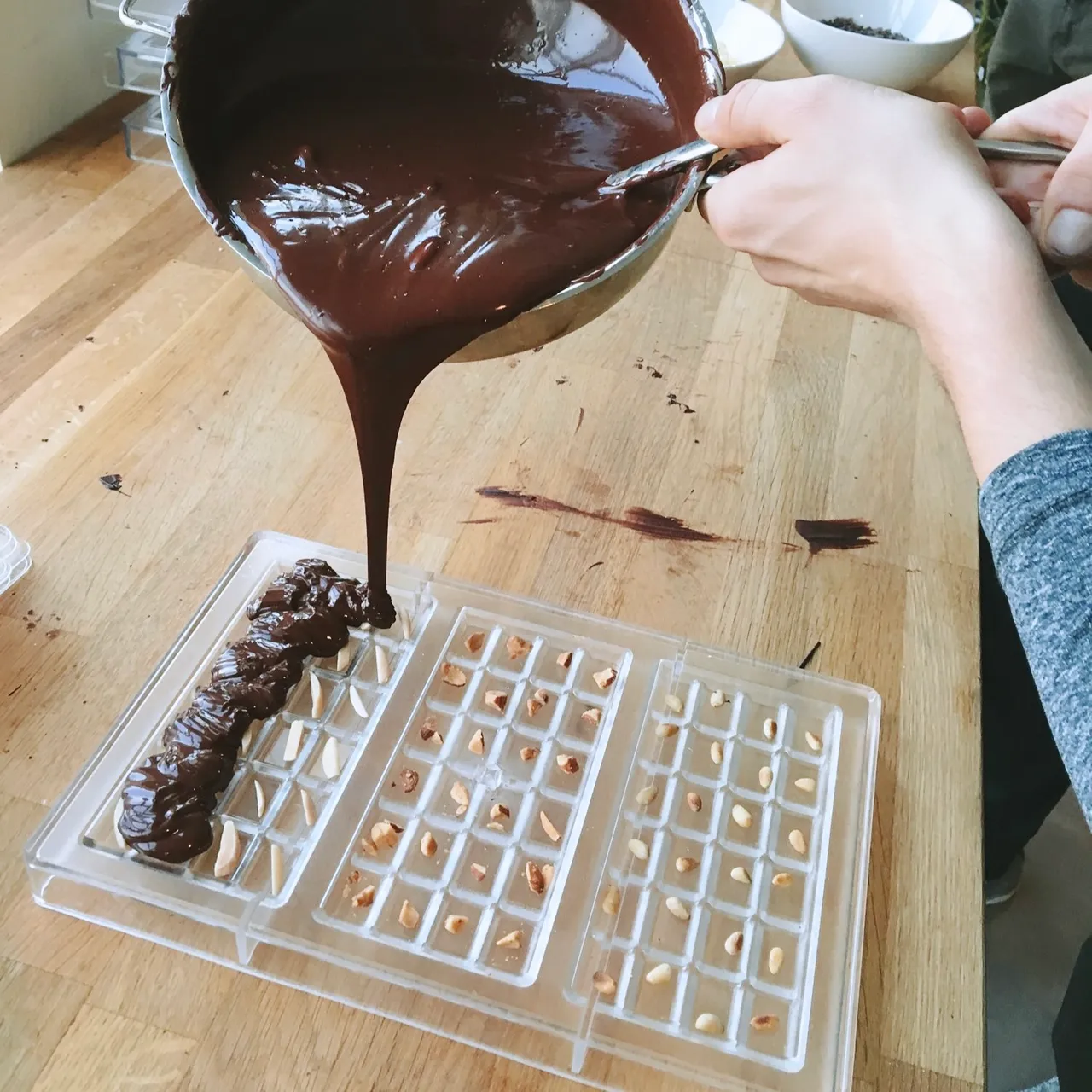
Mold your bars!
Conclusion
We’ve been tempering with silk for years now, and it works every time. It’s made making bean-to-bar chocolate at home easier, more reliable, and more fun.